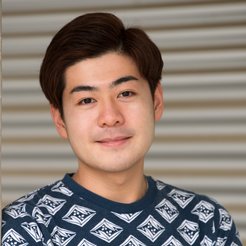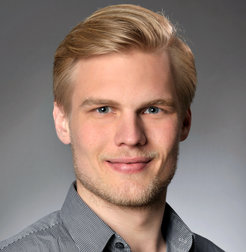Three Otto Hahn Medals and one Otto Hahn Award go to Göttingen junior researchers
Karl Bertram and Chun So of the MPI for Biophysical Chemistry and Fabian Jan Schwarzendahl of the MPI for Dynamics and Self-Organization received the prestigious Otto Hahn Medal. With this prize, the Max Planck Society honors the 30 best young researchers each year for outstanding achievements during their PhD. Only a few of the awardees also receive the Otto Hahn Award. This year, Chun So of the Department of Meiosisis one of them.
How the egg cell halves its chromosome set

Making a whole from two halves is not an easy feat. At least, when it comes to the fusion of egg and sperm. Before this can happen, a fertilizable egg cell has to halve its complete set of chromosomes in a special cell division called meiosis. If mistakes occur during this process, the result will be eggs with surplus or missing chromosomes. If these eggs are fertilized, the resulting embryo often dies or shows abnormalities such as Down's syndrome. Chun So studied still unexplored secrets of meiosis during his doctoral studies.
The molecular biologist focused on a complex machinery, the meiotic spindle, which drives halving of the chromosome set in the egg cell. Chun So discovered a previously unknown mechanism in mice and other mammals in which 19 proteins at the two poles of the spindle apparatus form an unusual, liquid-like structure. This structure promotes the spindle development. As part of his further research, Chun So wants to investigate the mechanisms of meiotic spindle assembly in human egg cells. In addition, he plans to develop new model systems to study earlier stages of egg cell development.
A detailed construction plan of the splicing machinery

In every cell, numerous “nanomachines” carry out vital tasks. During his doctorate, Karl Bertram studied one of them, the so-called spliceosome. This huge molecular machinery plays a fundamental role in all cells of our body: It cuts up and reorganizes the genetic information and then assembles it into a construction manual that enables each cell to produce the proteins needed. Until recently, however, it was largely unclear how this splicing process works at the molecular level and how it is regulated.
In his doctoral thesis at the MPI-BPC, Karl Bertram investigated the atomic structure, the detailed construction plan of the spliceosome, as part of a large cooperation between Holger Stark´s Department of Structural Dynamics, Henning Urlaub´s Research Group Bioanalytical Mass Spectrometry,and Reinhard Lührmann´s Emeritus Group Cellular Biochemistry. The biochemist has contributed to obtaining high-resolution, three-dimensional images of the human spliceosome with the cryo-electron microscope at different stages of the splicing process. These structures were among the first of this complex machine of human cells worldwide. In future, Karl Bertram wants to further develop key processes in cryo-electron microscopic sample preparation to gain an even better understanding of the molecular construction plans of our cellular nanomachines. (is/cr))
Chun So
studied cell- and molecular biology at the Chinese University in Hong Kong, receiving a total of 15 prizes and scholarships during his studies, and completed these in 2016. With a scholoarship of the Croucher Foundation he carried out his doctoral work in Melina Schuh's Department of Meiosisat the MPI-BPC, which he completed in 2019. Since then, he has continued his research as a Croucher/Max Planck Postdoc Fellow with Melina Schuh and with Ufuk Günesdogan at the University of Göttingen. The Otto Hahn Award now allows him to establish his own research group at a Max Planck Institute of his choice.
Karl Bertram
graduated in molecular biomedicine at the University of Bonn, moved to the Ludwig-Maximilians-Universitätof Munich after his bachelor's degree, and completed his master's degree in the fields of biochemistry, organic chemistry, and structural biology at the end of 2014 with a scholarship-funded research stay at Rockefeller University in New York. For his doctorate, he joined Holger Stark's Department of Structural Dynamicsat the MPI-BPC in 2015 and received his PhD in 2018.

